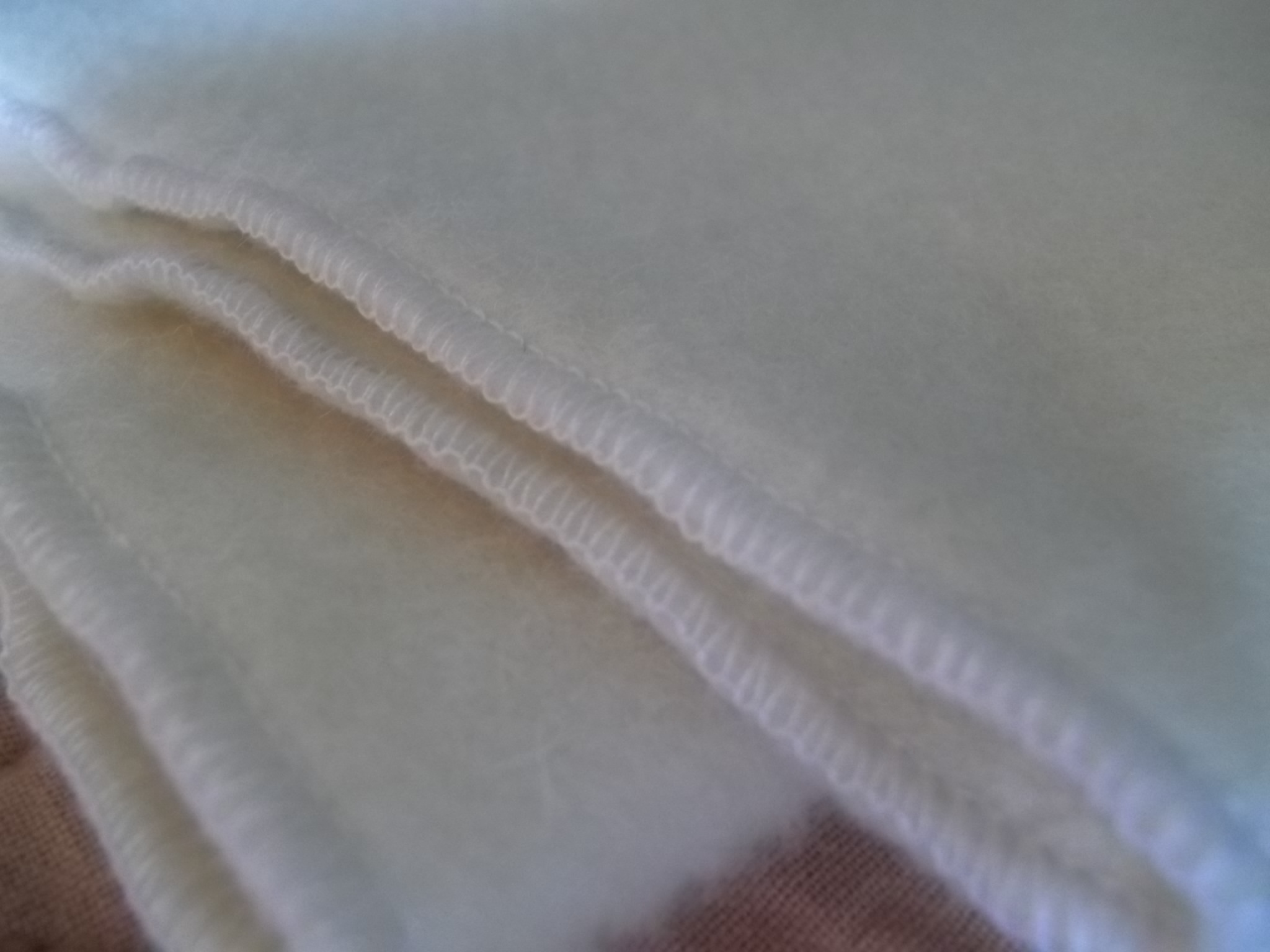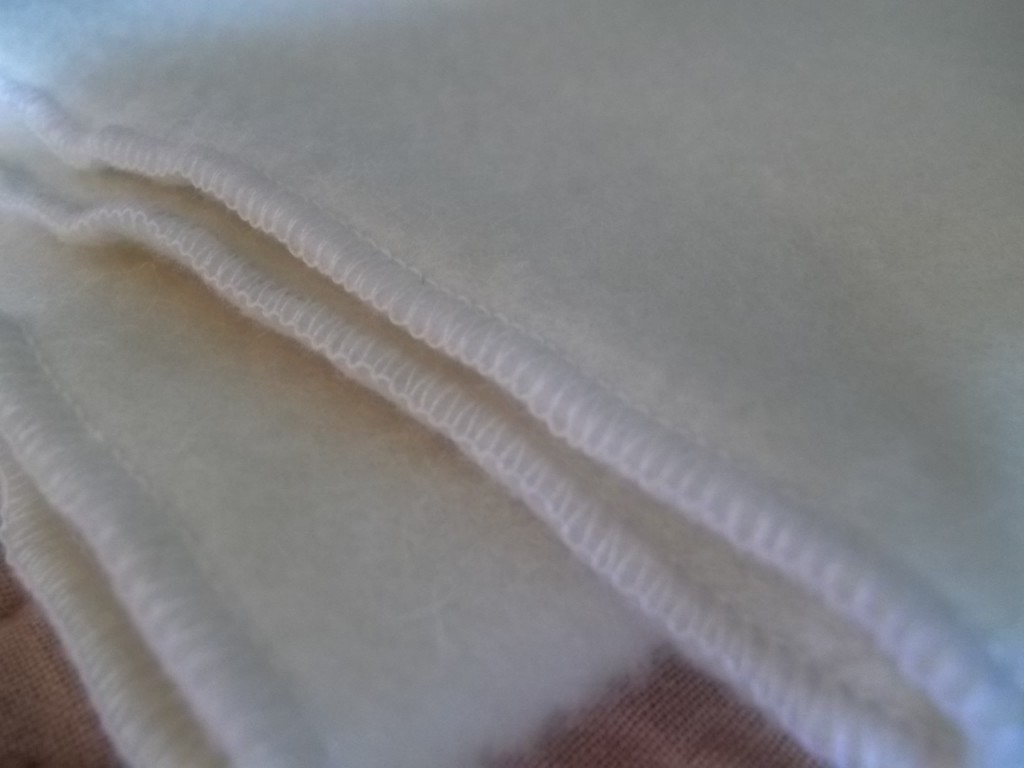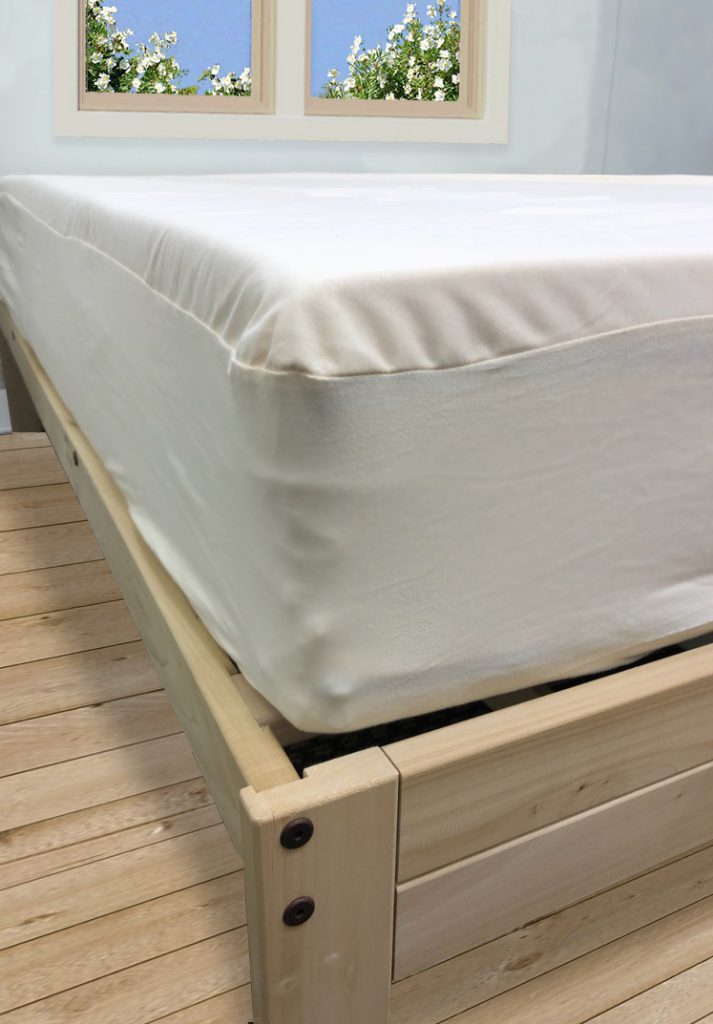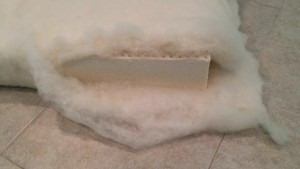
We sell two mattress protectors, a wool puddle pad and a waterproof jersey puddle pad. Both are certified organic. While both puddle pads work well against messes, they work differently and both have their pros and cons.
WOOL PUDDLE PAD

The wool puddle pad works because the wool fibers are so tightly felted together. Their physical mass as well as their ability to absorb the mess without leaving odors behind make the wool fibers quite unique. Some large spills may get through, but they will be few and far between. The absorption of the fibers is actually a neat trick, because not only does the wool dry quickly since the fibers are hollow and excellent at airflow, the wool also keeps the spill from spreading down the side of your mattress and everywhere else.
Another plus of the wool puddle pad is that it breaks the temperature regulating abilities of wool, one step closer to your body by being directly under your sheets.
The downside of the wool puddle pad is that over a few years, the fibers do start to pull away from each other in areas of high use and the pad will stretch. Of course, a stretching pad at first is nice, because then it covers the side of the mattress as well as the top. Since the fibers are felted and not woven, if washed, they need to be handwashed gently. Instructions are in the product.
WATERPROOF JERSEY PUDDLE PAD

The waterproof jersey puddle pad works through its laminate layer. While it is slightly air permeable, liquids cannot pass through it. The water will bead up and run off. It is very easy to clean, as you can machine wash it. Since the fabric shrinks in the wash, we have prewashed it for you so that it will still fit your mattress after your washing.
The downside of the waterproof jersey pad is its unnatural component of the polyurethane layer. While it is a certified GOTS organic polyurethane, to the natural purists out there, the laminate layer is not natural at all.


